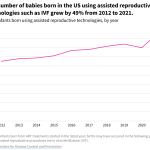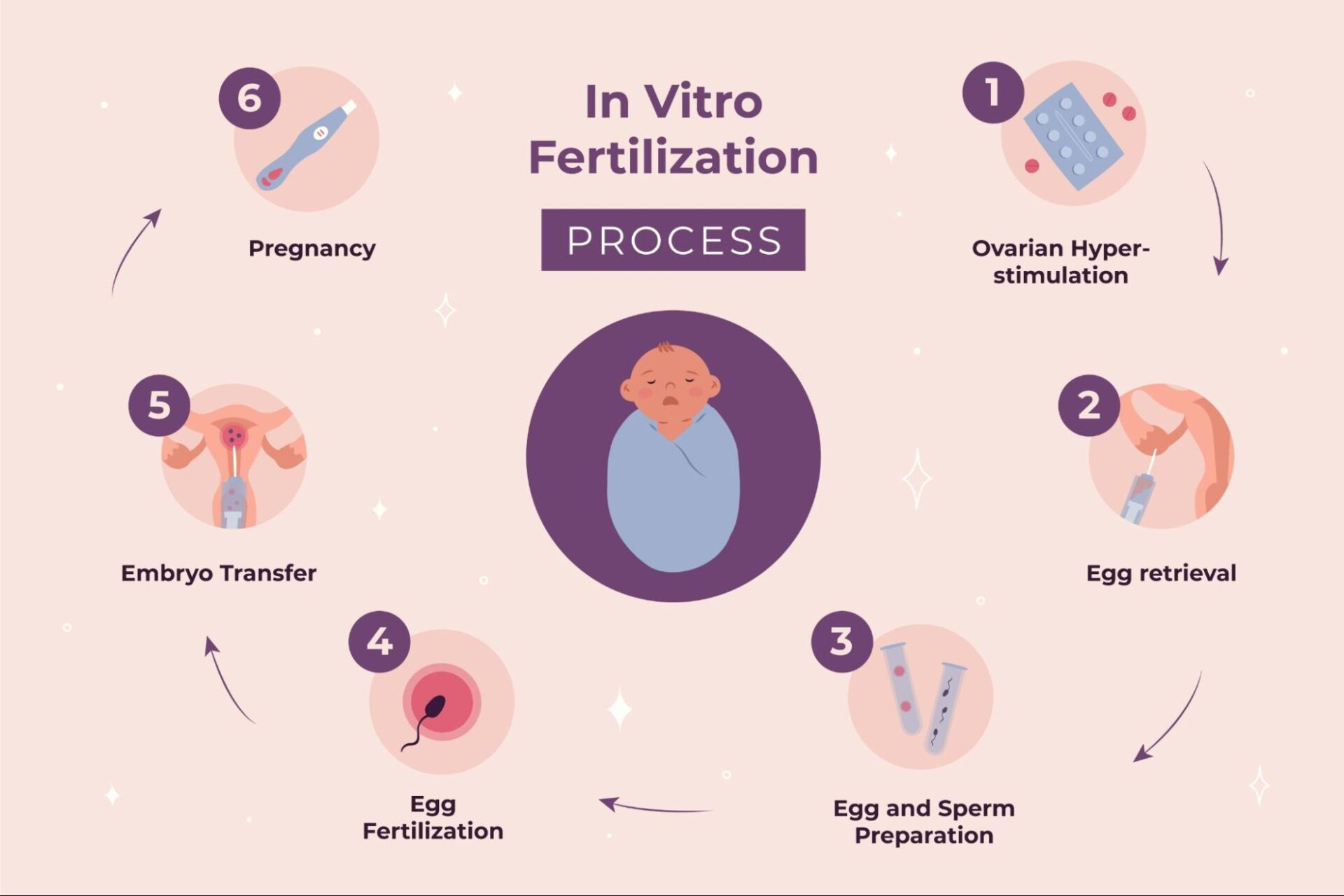
How Many Births Are From IVF? A Deep Dive Into the World of In Vitro Fertilization
April 19, 2025
How Many Eggs Are Cultured in the IVF Process?
April 19, 2025Your IVF Due Date: Everything You Need to Know About Timing Your Baby’s Arrival
So, you’re on the exciting (and maybe a little nerve-wracking) journey of in vitro fertilization (IVF). One of the biggest questions swirling in your mind is probably: When will my baby arrive? Figuring out your due date with IVF isn’t quite like the traditional “count 40 weeks from your last period” method. It’s a bit more like cracking a secret code—one that involves embryo transfers, sneaky science, and a sprinkle of patience. Whether you’re a planner who’s already picking out nursery colors or just curious about what’s ahead, this guide will walk you through everything you need to know about your IVF due date. Plus, I’ll spill some lesser-known details that even your nosiest friend might not know yet!
Let’s dive in and uncover the mystery of your baby’s big debut.
How Is an IVF Due Date Different from a “Regular” One?
When you conceive naturally, doctors usually estimate your due date based on the first day of your last menstrual period (LMP). It’s a simple starting point—add 280 days (or 40 weeks), and voilà, you’ve got an estimated due date (EDD). But with IVF, things get a little more high-tech. Why? Because you don’t have that natural ovulation moment to kick things off. Instead, your due date hinges on precise dates from your fertility treatment—like when your eggs were retrieved or your embryo was transferred.
Why It’s Unique
- No Guesswork: In a natural pregnancy, ovulation can be a bit of a wild card (did it happen on day 14 or day 18?). With IVF, doctors know exactly when fertilization happens, making the timeline more accurate.
- Embryo Age Matters: Were you transferred a 3-day embryo or a 5-day blastocyst? That tiny detail shifts your due date.
- Frozen vs. Fresh: Using a frozen embryo? That adds another layer to the calculation.
Think of it like baking a cake. A natural pregnancy is like tossing ingredients in a bowl and hoping it rises in about 9 months. IVF is more like following a recipe where you know the exact moment the batter hits the oven.
Fun Fact Fans Love
Did you know some IVF parents celebrate their embryo transfer day like a mini-anniversary? It’s the day their baby’s journey technically began—talk about a cool trivia tidbit for your future kiddo!
How Doctors Calculate Your IVF Due Date
Alright, let’s get into the nitty-gritty. Calculating your IVF due date isn’t something you need a PhD for, but it does involve a few key steps. Here’s how the pros do it—and how you can sneak a peek at the timeline yourself.
Step 1: Pinpoint the Starting Line
Your due date depends on two big factors:
- Egg Retrieval Date: This is when your eggs were collected and fertilized in the lab.
- Embrace Transfer Date: This is when your little embryo was placed in your uterus.
For a fresh IVF cycle, doctors often use the egg retrieval date. Why? Because that’s when fertilization happens. For a frozen embryo transfer (FET), they lean on the transfer date and tweak it based on how old the embryo was when it was frozen.
Step 2: Add the Magic Numbers
Here’s where the math comes in:
- Fresh Cycle: Doctors count 266 days (38 weeks) from the day of egg retrieval. Why 38 weeks? That’s how long it takes a fertilized egg to grow into a ready-to-meet-you baby.
- 3-Day Transfer: If your embryo was transferred 3 days after fertilization, subtract those 3 days from the 266-day total (263 days from transfer).
- 5-Day Transfer: For a blastocyst (5-day embryo), subtract 5 days (261 days from transfer).
Step 3: Double-Check with Ultrasound
Around 6-8 weeks, your doctor will do an ultrasound to measure your baby’s size. If the little one is growing right on track, they’ll stick with the calculated due date. If not, they might tweak it slightly.
A Quick Example
Let’s say your embryo transfer was on March 1, 2025, with a 5-day blastocyst:
- Add 261 days to March 1.
- That lands you around November 17, 2025. Ta-da—your EDD!
Pro Tip
Grab a calendar and count it out yourself. It’s like playing detective with your baby’s arrival!

Fresh vs. Frozen: Does It Change Your Due Date?
You might be wondering, Does it really matter if my embryo was fresh or frozen? Spoiler alert: yes, it does! The difference isn’t huge, but it’s enough to shift your due date by a few days. Let’s break it down.
Fresh Embryo Transfers
- What Happens: Eggs are retrieved, fertilized, and transferred within a few days (usually 3 or 5).
- Due Date Math: Doctors start with the retrieval date and add 266 days. If it’s a 3-day transfer, they adjust to 263 days from the transfer date; for 5-day, it’s 261 days.
- Why It Works: The embryo’s age is fresh and predictable—no time spent in the freezer.
Frozen Embryo Transfers (FET)
- What Happens: Embryos are frozen after fertilization, stored, then thawed and transferred later.
- Due Date Math: The calculation starts with the transfer date, but you subtract the embryo’s age at freezing (3 or 5 days). So, a 5-day FET due date is 261 days from transfer.
- Cool Twist: Some clinics freeze embryos at the blastocyst stage (day 5), which is why FETs often use that 261-day rule.
Which Is More Accurate?
“Both methods are super precise,” says Dr. Monica Moore, a nurse practitioner with over 20 years at Illume Fertility. “The key is knowing the embryo’s age and transfer timing—IVF takes out a lot of the guesswork.”
Hidden Gem for Fans
Frozen embryo transfers have a secret perk: some parents say it feels like their baby was “waiting” for them in the freezer. Imagine telling your kid, “You were on ice until we were ready for you!”—it’s a story worth sharing.
What About Donor Eggs or Embryos?
Using donor eggs or embryos adds a fun twist to the due date game. Maybe you’re picturing a sci-fi movie where babies come from a lab (don’t worry, it’s not that wild!). Here’s how it works.
Donor Eggs
- The Process: Fresh donor eggs are fertilized with sperm (yours or a donor’s), and the embryo is transferred soon after. Frozen donor eggs are thawed, fertilized, and transferred.
- Due Date Trick: Same as a fresh cycle—266 days from retrieval (or 261/263 from transfer, depending on embryo age).
- Why It’s Special: The donor’s age doesn’t affect the due date, but younger eggs often mean better success rates.
Donor Embryos
- The Process: Someone else’s embryo (already fertilized) is thawed and transferred to you.
- Due Date Trick: Use the transfer date and subtract the embryo’s age (3 or 5 days). A 5-day donor embryo? That’s 261 days from transfer.
- Fan Favorite Fact: Your baby might share no DNA with you, but the due date is still yours to claim. It’s like adopting a timeline!
Practical Advice
✔️ Ask your clinic for the exact embryo age at transfer—it’s the golden ticket to nailing your due date.
❌ Don’t assume it’s the same as a friend’s natural pregnancy timeline—it’s a custom job!
Can Your Due Date Change? (Spoiler: Yes!)
Here’s a curveball: your due date isn’t set in stone. Even with IVF’s pinpoint accuracy, things can shift. Why? Because babies don’t always follow the script!
Why It Might Move
- Early Ultrasound: If your 6-week scan shows the baby’s size doesn’t match the calculated date, your doctor might adjust it.
- Growth Spurts: Some IVF babies grow faster or slower, especially if multiples are in the mix.
- Your Body’s Role: Hormones and implantation timing can nudge things a bit.
What the Research Says
A 2023 study in Fertility and Sterility found that 85% of IVF pregnancies stick to their original due date within a 5-day window. That’s pretty solid, but it leaves room for surprises.
Real-Life Example
Imagine Sarah, who had a 5-day FET on April 10, 2024. Her due date was set for December 27, 2024. But her 8-week ultrasound showed the baby measuring 3 days ahead—new EDD? December 24! A Christmas Eve baby—talk about a holiday gift.
Action Step
✔️ Keep a journal of your key dates (retrieval, transfer, ultrasounds). It’s your personal roadmap if things shift.
The Secret Stuff No One Talks About
Let’s peel back the curtain on some IVF due date details that don’t always make the headlines. These are the juicy bits your friends might not know—and they’ll make you the star of your next coffee chat.
Implantation Timing Isn’t Instant
After transfer, your embryo doesn’t just stick right away. It can take 6-10 days to implant, depending on its age and your body. That little waiting game doesn’t change the due date, but it’s a wild ride to imagine your future kid “floating around” before settling in.
Your Clinic Might Use a Wheel
Ever seen those old-school pregnancy wheels? Some doctors still spin them to calculate your due date. It’s low-tech but oddly satisfying—like a fortune teller predicting your baby’s birthday.
The Emotional Countdown
“IVF due dates feel more real because you’ve fought for every milestone,” says Dr. Sarah Johnson, a fertility counselor. Parents often obsess over the countdown, marking weeks with rituals like buying tiny socks or writing letters to their baby-to-be.
Quirky Tip
✔️ Celebrate “conception day” (aka retrieval or transfer day) with a cupcake. It’s a sweet way to honor the start of something big—and fans love hearing about these personal traditions!
Multiples and Your Due Date: Double Trouble?
Twins, triplets, oh my! If your IVF cycle blesses you with multiples, your due date gets a whole new vibe. Here’s what to expect.
Why It’s Different
- Shorter Timeline: Twins often arrive around 37 weeks, triplets even earlier (34-35 weeks). Your 40-week dream might shrink.
- Higher Stakes: Multiples increase preterm birth odds, so your doctor might aim for an earlier delivery.
The Numbers
A 2024 CDC report says 31% of IVF pregnancies with two embryos transferred result in twins. That’s a lot of double strollers!
How to Adjust
- For twins with a 5-day FET on March 1, 2025:
- Single baby EDD: November 17, 2025 (261 days).
- Twins EDD: Around October 27, 2025 (37 weeks, or 245 days).
- Add a week or two earlier for triplets.
Pro Move
✔️ Stock up on preemie clothes just in case—multiples love to keep you guessing!
Top Questions IVF Parents Ask About Due Dates
You’ve got questions, and I’ve got answers. Here’s what real IVF hopefuls are buzzing about—and some straight-up solutions.
Q1: Can I Trust an Online IVF Due Date Calculator?
- Answer: Mostly, yes! Plug in your transfer date and embryo age, and it’ll spit out a solid guess. But double-check with your clinic—those calculators don’t know your body.
- Tip: Try one for fun, then compare it to your doctor’s call.
Q2: What If My Due Date Falls on a Holiday?
- Answer: Babies don’t care about calendars! A Valentine’s Day or Halloween due date is cute, but expect a range (37-41 weeks). Plan for flexibility.
- Fun Idea: Match your nursery theme to the holiday—pumpkin decals, anyone?
Q3: Does Stress Affect My Due Date?
- Answer: Nope, stress won’t shift the date itself. But it can make the wait feel eternal. A 2024 study in Human Reproduction found mindfulness cuts anxiety by 22% in IVF patients—worth a shot!
- Try This: Deep breaths or a cozy movie night to chill out.

Practical Tips to Prep for Your IVF Due Date
Knowing your due date is just the start. Here’s how to get ready for the big day—practical, doable, and straight from the heart.
Step-by-Step Prep Guide
- Mark Your Calendar: Circle your EDD and key checkups (like your 12-week scan).
- Build a Buffer: Plan for a week before and after—babies love surprises.
- Stock Up Early: Diapers, wipes, and a car seat by 35 weeks = peace of mind.
- Lean on Your Crew: Tell friends your due date so they can rally when it’s go-time.
Must-Have Checklist
✔️ Hospital bag (pack by 34 weeks)
✔️ Birth plan (share with your doc)
✔️ Comfy clothes (you’ll live in them)
❌ Don’t overbuy newborn gear—babies grow fast!
Insider Hack
“Start a due date countdown jar,” suggests Dr. Lisa Holloway, an IVF mom and OB-GYN. “Drop in a note or treat for each week you pass—it’s a fun way to stay excited.”
The Latest Research on IVF Due Dates (2025 Edition)
Science doesn’t sleep, and neither does the quest for better IVF outcomes. Here’s what’s new in 2025—and how it might tweak your due date plans.
AI-Powered Precision
A 2025 study in Nature Medicine tested AI to predict IVF due dates using embryo growth patterns. Result? It nailed 92% of dates within 3 days—better than the classic method. Ask your clinic if they’re jumping on this tech train.
Implantation Breakthroughs
Researchers found that tweaking progesterone levels post-transfer can speed up implantation by 1-2 days. No due date shift, but it could mean earlier pregnancy confirmation—hello, peace of mind!
What It Means for You
✔️ Stay curious—ask your doctor about cutting-edge tools they’re using.
❌ Don’t sweat small changes—your baby’s still on their way!

Your IVF Due Date: A Personal Journey
Your due date isn’t just a number—it’s a milestone you’ve earned. Maybe you’ve got a scrapbook of ultrasound pics or a playlist for labor day. Whatever your vibe, make it yours.
A Little Inspiration
Picture this: You’re sipping tea, staring at November 17, 2025, on your calendar. That’s the day you’ll meet the tiny human you’ve dreamed of. Every transfer, shot, and tear led here. Pretty amazing, right?
Share Your Story
What’s your due date tradition? A special meal? A lucky charm? Drop it in the comments—I’d love to hear how you’re counting down!
Let’s Chat: What’s Your IVF Due Date Question?
This journey’s all about you, so let’s keep the convo going. Got a burning question about your IVF due date? Wondering how to handle the wait? Hit me up below—I’m here to help. And hey, if you loved this deep dive, share it with your IVF crew. Let’s get everyone in on the due date fun!
What’s your EDD? Spill the beans—I’m all ears!
